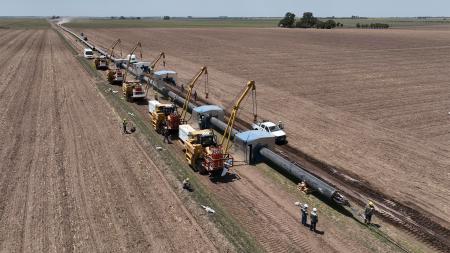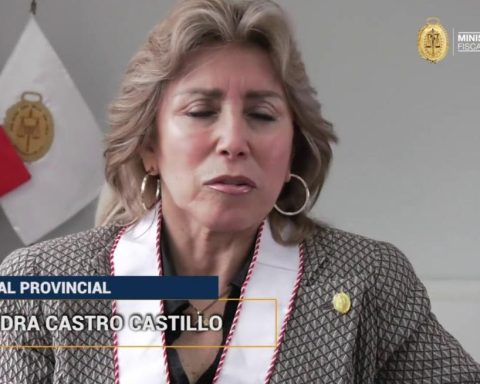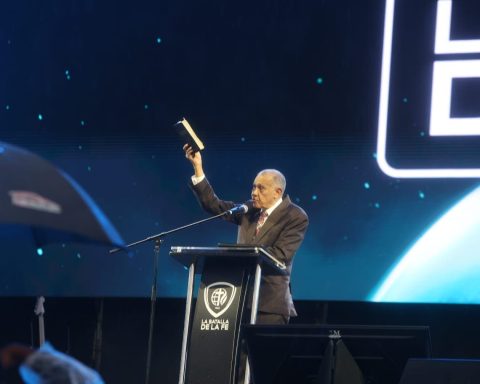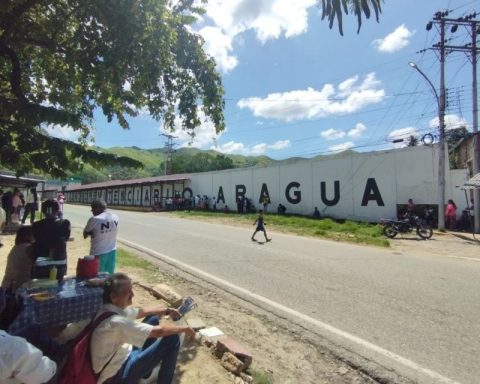The commissioning of the President Néstor Kirchner Gas Pipeline (GPNK) will represent changes in the Argentine economic structure, with a greater supply of natural gas for industry and residential consumption, in addition to estimated savings of US$ 2.2 billion in cuts in imports of energy and subsidies, according to official calculations.
For the director of the Center for Political Economy Argentina (CEPA), Hernan Letcher“the gas pipeline will give Argentina the possibility of transforming its economic matrix, given that in successive stages it will allow access to dollars that it does not have today.”
“Vaca Muerta are two soybean complexes added“, compared Letcher in Télam statements, referring to the generation of foreign currency that unconventional deposits will contribute once their production can be transported, distributed and exported without the current bottlenecks.
“The GPNK will change the daily life of Argentines, marked by doubts by hoarding dollars, problems with imports, exchange rate and possibly inflationary tensions”Hernan Letcher
In this regard, in the decree of necessity and urgency 76 of February 11, 2022, the Government stressed the importance of the constitution of Fondegas (Argentine Gas Development Fund), for the construction of the GPNK, at a time when “the The transportation capacity of the three gas pipelines that link the Neuquén Basin with the large consumption centers is practically saturated”.
This situation meant that “gas producers in said basin cannot continue increasing their production beyond 5 million to 6 million additional cubic meters per day, precisely because it is impossible to evacuate it”added the DNU.

In the same regulation it was stated that “the reinforcement of the gas transportation system in the Pampas region will enable the development of numerous investments in petrochemical activities, such as the production of urea, methanol, polypropylene, and ethylene, among others, and will contribute substantially to adding value to hydrocarbon resources”.
The same DNU granted the concession for the construction, maintenance, operation and provision of the gas pipeline service to Energía Argentina (Enarsa, then IESA) for 35 years and empowered it to carry out the works “by itself or by third parties”.
In July 2022, the construction of the first section of the GPNK was awarded to the joint venture made up of the companies Techint and Sacde.
For Letcher, the GPNK “will change the daily life of Argentines, marked by doubts by hoarding dollars, problems with imports, exchange rate and possibly inflationary tensions”.

“The main problem of the Argentine macroeconomics is the external restriction, the lack of dollars, and with the GPNK the Government will be able to discuss the issue not only with the agricultural sector but also with the energy sector, with an amount of foreign currency that can double to that of the soybean complex,” he added.
In a tour of the works in November of last year, the Secretary of Energy, Flavia Royónstated that the GPNK will enable a savings of US$ 2.2 billion due to the reduction of energy subsidies (one of the main factors that affect the primary deficit) and importsespecially after the increase in international hydrocarbon prices as a result of the Russian invasion of Ukraine.
(FW”The main problem of the Argentine macroeconomy is the external restriction, the lack of dollars, and with the GPNK the Government will be able to discuss the issue not only with the agricultural sector but also with the energy sector, with a quantity of foreign currency that can double that of the soybean complex”Hernan Letcher(FW)
The first section of the work, currently underway, will link the towns of Tratayén (Neuquén) and Salliqueló (Buenos Aires), with an extension of 573 kilometers, with 56,700 welded pipes, 12 meters long.
That quantity of tubes contemplates the 573 kilometers of the trunk work, plus the 80 kilometers of the Mercedes-Cardales gas pipeline, and the 29 kilometers of the loop (circuit) for the expansion of Neuba II, which are a necessary part of the project to make incremental production viable.
Countdown to June 20
The start date of operation is expected for June 20, coinciding with the peak of winter demand, with a laying of six kilometers of pipe per day.

The gas pipeline in its first section has a transport capacity of 11 million cubic meters per day, with the possibility of increasing it to 20 million with the construction of two turbochargers in Tratayén and Salliqueló.
A second stretch will join the aforementioned town in Buenos Aires with the Santa Fe town of San Jerónimo Sur, with an extension of 470 kilometers.
With the two sections completed, the injection of natural gas is expected to reach 44 million m3 per day.


















